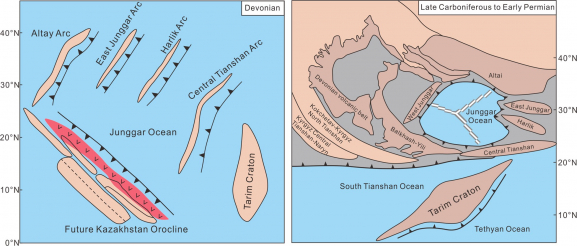 HKU Department of Earth Science
HKU Department of Earth Science
Seminar

Magmatism in the Southwestern Central Asian Orogenic Belt: implications for tectonic, metallogenic and environmental evolution
-
Date
July 4,2022
-
Time
3:00PM -3:45PM
-
Speaker
Mr. WANG Xiangsong Department of Earth Sciences, HKU
The southwestern Central Asian Orogenic Belt (CAOB) was formed due to the long-lived subduction of the Paleo-Asian Ocean, with amalgamation of varied tectonic units. Numerous magmatic rocks witnessed tectonic, metallogenic and environmental evolution of the southwestern CAOB. Although many studies have been conducted, a series of controversies remain, especially on petrogenesis of adakites, mechanism of oroclinal bending, and relationship between ocean redox and ore deposits. Our study reveals that (1) Both sodic and potassic continental adakites were likely derived from fluid-fluxed melting at normal lower crustal pressures; (2) The subduction zone transformation and subsequent trench retreat may account for oroclinal bending in the southern limb of the Kazakhstan Orocline in the Carboniferous; (3) Substantial reduced sediments within the accretionary complex belts in the Circum Junggar Collage indicate widespread anoxia of the Junggar ocean in the Carboniferous, which was possibly due to its isolation from the wider Paleo-Asian Ocean. The generation of porphyry Cu deposits may strongly depend on the ocean oxidation state.
Additional information: Mr. WANG Xiangsong; u3006391@connect.hku.hk
